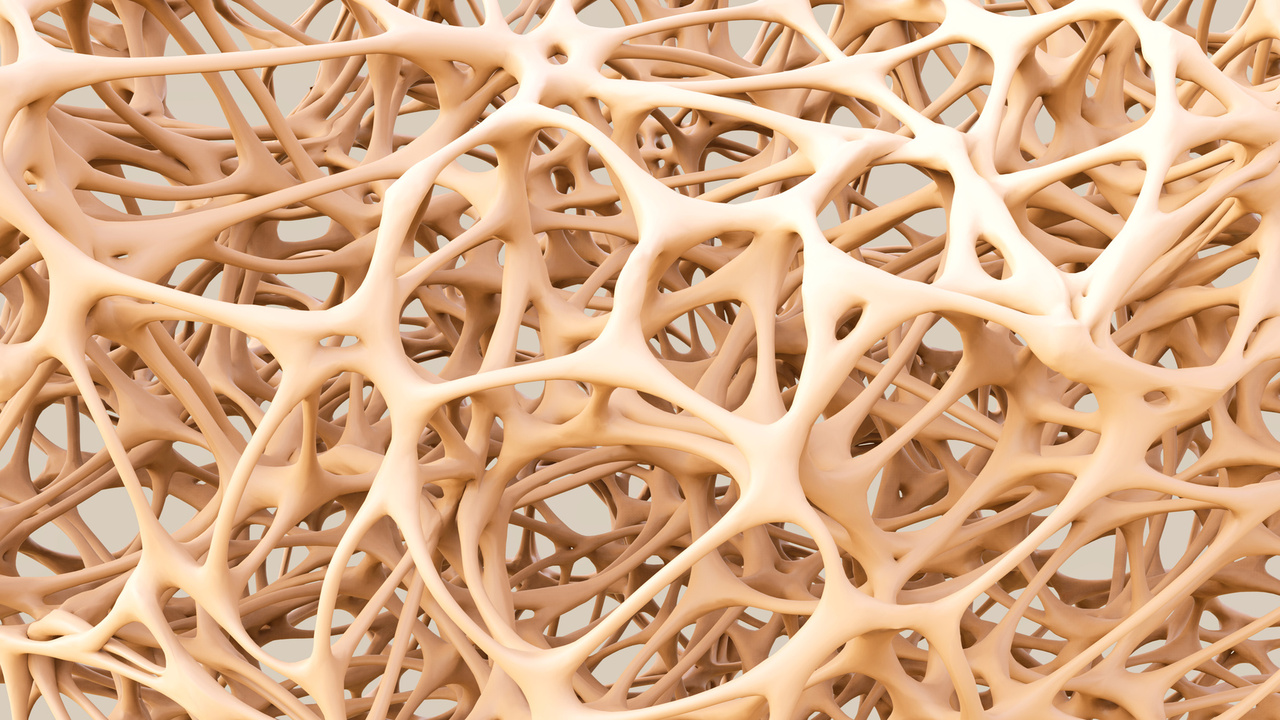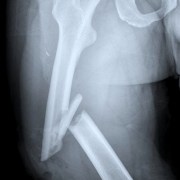Causes
Throughout life, old bone is removed and new bone is added to the skeleton. During childhood and adolescence, new bone is added faster than old bone is removed. As a result, bones become heavier, larger, and denser. Peak bone mass is reached at around age 30. From that point, more bone is lost than replaced. If not treated, bone losses may lead to osteoporosis. Osteoporosis is more likely to occur if full bone mass was not achieved during the bone-building years.
Bone density also plays a role in bone health. Bone density is determined by the amount of calcium , phosphorus , and other minerals within the bone framework. As the mineral content of a bone (especially calcium) decreases, the bone weakens. Getting enough calcium and vitamin D and exercising regularly can keep bones strong throughout life.
Risk Factors
These factors increase your chance of developing osteoporosis. Tell your doctor if you have any of these risk factors:
- Sex: female
- Age: risk increases with age
- Body size: small, underweight women
- Race: Caucasian, Asian, and Hispanic women
- Family members with osteoporosis
- Postmenopausal status
- No menstrual periods ( amenorrhea )
- Low-calcium diet
-
Medications:
- Immunosuppressants, such as prednisone and other steroids, methotrexate , cyclosporine
- Thyroid drugs
- Anticonvulsants
- Aluminum-containing antacids
- Cholesterol-lowering drugs
- Long-term heparin therapy
- Antidepressants, including selective serotonin reuptake inhibitors (SSRI)
- Inhaled steroids
- Glitazones *³
- Low estrogen levels in women
- Low testosterone levels in men
- Inactive lifestyle
- Too little sunlight
- Depression
- Anorexia
- Cigarette smoking
- Excessive use of alcohol , coffee, and tea
-
Diseases including:
- Liver disease, including cirrhosis
- Hyperthyroidism
- Scurvy
- Alcoholism
- Marfan's , Ehler-Danlos , and osteogenesis imperfecta syndromes
- Cushing's syndrome
- Hyperparathyroidism
- Cancer, including lymphoma and multiple myeloma
- Gastrointestinal disorders, including celiac disease and other malabsorptive disorders
- Chronic obstructive pulmonary disease (particularly men)
- Inflammatory diseases, including rheumatoid arthritis and lupus
Please be aware that this information is provided to supplement the care provided by your physician. It is neither intended nor implied to be a substitute for professional medical advice. CALL YOUR HEALTHCARE PROVIDER IMMEDIATELY IF YOU THINK YOU MAY HAVE A MEDICAL EMERGENCY. Always seek the advice of your physician or other qualified health provider prior to starting any new treatment or with any questions you may have regarding a medical condition. Copyright © 2024 EBSCO Publishing All rights reserved.
 Are Your Bones Getting Weaker? Find Out With Bone Density Testing
Are Your Bones Getting Weaker? Find Out With Bone Density Testing








